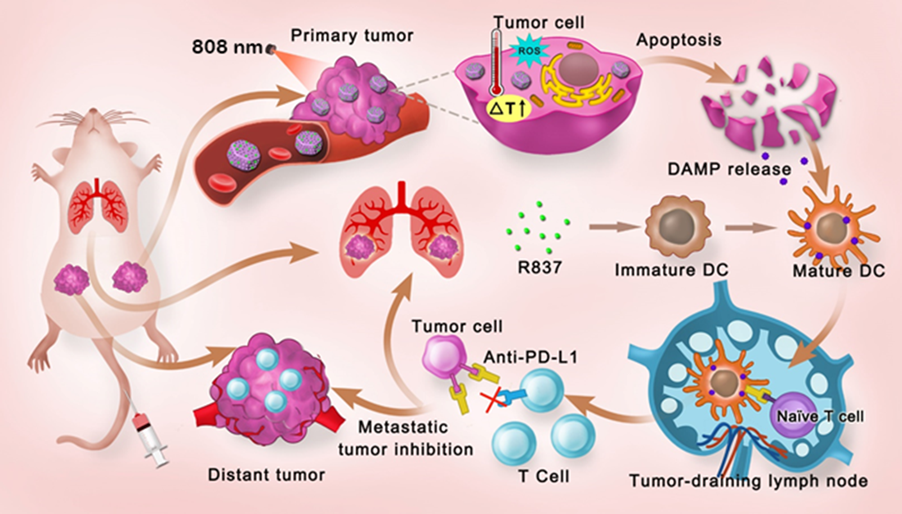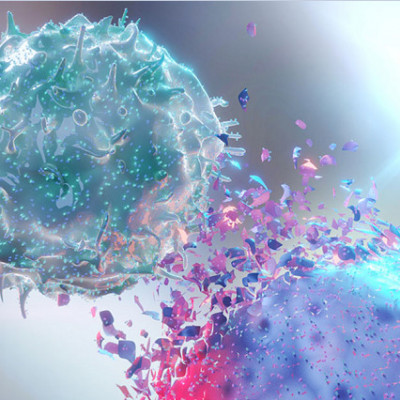Cancer immunotherapy is a treatment modality against tumor growth and metastasis by stimulating host immune responses. Phototherapy, including photodynamic therapy (PDT) and photothermal therapy (PTT), is a less invasive treatment compared with chemotherapy. To be specific, PDT and PTT-induced immunogenic cell death can release tumor-associated antigens and damage-associated molecular patterns, stimulating an immune response.
Photo-immunotherapy, the combination of phototherapy and immunotherapy, can effectively enhance treatment effectiveness compared with a single treatment modality. Up to now, the multifunctional photo-immune system is still in its infancy. Hence, the development of a multifunctional and safe photo-immunotherapy system for efficient tumor treatment is urgently needed.
DONG Wenfei's group from the Suzhou Institute of Biomedical Engineering and Technology (SIBET) of the Chinese Academy of Sciences has recently developed a multifunctional nanoplatform based on mesoporous hexagonal core-shell zinc porphyrin-silica nanoparticles (MPSNs) loaded with R837 (a toll-like receptor-7 agonist), which can be used to integrate PDT, PTT, and tumor-specific immunotherapy for breast cancer.
According to the researchers, MPSNs with zinc phosphide (ZnP) as the core and a mesoporous silica framework as the shell could effectively generate singlet oxygen and convert photons to heat with a single light source.
Meanwhile, the excellent mesoporous structure of the silica shell can facilitate efficient R837 loading. Consequently, the therapeutic strategy based on MPSNs@R837 not only eradicated primary tumors via phototherapy modalities (PDT and PTT), but also effectively inhibited distant metastasis due to the strong immune response triggered by the two-way mechanistic interaction.

Schematic diagram of nanomaterials for photoimmunotherapy of breast cancer.
This study has been published in Journal of Nanobiotechnology and it was supported by the National Key R&D Program of China and other funds.
Read the original article on Chinese Academy of Sciences (CAS).
